| Author | Message | ||
Larry Kavanagh Frequent User Username: shadow_11 Post Number: 568 Registered: 05-2016 |
Funny that David, I was only thinking of the same issue within the past day or so. I was wondering if the cylinder liners are partially visible when the frost plugs are removed so that I could check if there's any corrosion in the engine block but I wasn't eager to remove them as I have no good reason to suspect that there's any corrosion in there. | ||
Vladimir Ivanovich Kirillov Prolific User Username: soviet Post Number: 1673 Registered: 02-2013 |
Continuing my epic journey for repairing the JRH 23682 Camargue Engine (this article applies to all 6.75L engines in Shadows, Wraith, Spirits and Spurs I assume) I have come across what has to be without a shadow of a doubt the world's most durable core plugs. Firstly they are beautifully made out of thick stainless steel so the chances of them ever rusting out like my 76 Cadillac core plugs is zero. No doubt they weigh 2-3 times that of conventional brass or steel core plugs. So far I have discovered 3 types of these core plugs on the engine. The ones in the front of the engine are hexagon bolt types and I used a 43 mm by 3/4 drive single hex socket to remove them. All the plugs are right hand thread and have a white sealant on the threads with an aluminium washer underneath the hex head.. I recommend Loctite 567 Threadsealer for them though it is very expensive sealant it makes thread tape in my experience redundant as a dodo. The two core plugs on each side of the cylinder block require a special tool for removal unless you wish to bruise the holes in them using twin steel punches and a bar. I really don't recommend that method because although these plugs are extremely solid they can be tight ( but nowhere near as tight as I anticipated) you don't really what to butcher the holes in the core plug. Needless to say I am certain some vandal somewhere has attempted the removal of the core plugs using just a single punch and a hammer or even a cold chisel. The two special tools to remove both the small and large core plugs are available from Kelly Ophar in Utah USA, who is also a forum contributor but you can google British Tools Rolls Royce and his site comes up. Now here is a kind word of advice about using these special tools. First the two prongs which screw into the tools are made to be removed and moved to the other holes on the tool for different size plugs. You must make certain that those prongs are screwed all the way in and are tight with a pair of good mulitgrips like Wurth because if you don't you will enter a world of pain and expense and possibly damage the tool as the force upon those prongs is great when you need 1 metre of bar to loosen the core plugs. Additionally, when applying pressure to the bar attached to the socket attached to the core plug removal tool push hard upon the end of the bar holding the removal tool or the tool will slither its way out of the two holes in the core plug possibly damaging you, the core plug and the tool. Now why did I remove the plugs? This engine arrived from New York under the bonnet/hood of the Camargue not running and with the gearbox on the front seat and with scribble yap on a piece of duct tap on the A rocker gear which seemed to say one cylinder was down on compression. Having pulled the engine apart with the pistons out I found one liner and one piston badly scored in A4 although A3 liner appears to have slight scuffing. A4 piston is badly grooved on the lower skirt. As the inside of the cylinder liners still show cross hatching from honing its doubtful they engine has done a lot of miles. I can only assume the usual caper of the previous owners not changing the coolant at three year intervals caused corrosion between the liners and the cylinder block and thereafter in turn caused the damaged liner to squeeze onto the A4 piston causing the damage. However that assumption may be wrong and something sneaky and sinister could be afoot. Here is the interesting part. I removed the core plugs to inspect the inside of the coolant galleries in the cylinder block to get some type of a feeling for how tight the liners would be to pull. Looking into the inside of the coolant chambers of the cylinder block it appears like new. No corrosion evident. Now in the photos you will see vernier calipers reading 25.45 mm. It is measuring a piece of solder which was located under the coolant plug forward of A3. The width of the solder is approximated 12-13 mm. Now if you look at the pic showing down through the front engine core plug you can see and oblong hole being part to the cooling gallery casting which is very close to the size of the piece of solder. My guess is the solder got there from the radiator. Mysteriously though this car was advertised by a large international classic car dealer in New York as complete it arrived missing the radiator and one rocker cover off A side. The gearbox arriving on the front seat did not impress me although the idiot fool that put it there did at least put some heavy cardboard underneath it so the lower seat squab leather nor the seat was not damaged. The bell housing of the transmission did during its journey down the Atlantic, through the Panama Canal and across the Pacific Ocean cut a small hole into the leather on the inside door passenger front side panel but I guess they has to be some drawback to buying one of the only 184 RHD Camargues ever made. Could it be that the piece of solder blocked the coolant gallery near A3 and A4 causing those cylinders to overheat? If the liners don't show corrosion when they are removed then that could be the answer to the mystery of this Camargue engine. The mileage odometer reads 000088.and 98419 actual appears on the Certificate of Title from Nebraska which also bears the name of the purchaser being the dealer I purchased the car from. The interior leather on the car is in almost perfect shape. Perhaps the car has only done 100088 miles as all the above seems to indicate. (Message approved by david_gore) Moderator Comment: Vladimir has forwarded photos for me to resize as he does not have access to image processing software compatible with his computer Operating System. I will do this and post them in the next day or so. | ||
David Gore Moderator Username: david_gore Post Number: 3571 Registered: 04-2003 |
I have finally been able to resize Vladimir's photos for posting as below; my apologies for the delay caused by circumstances outside my control: 1. Looking down forward core plug hole: 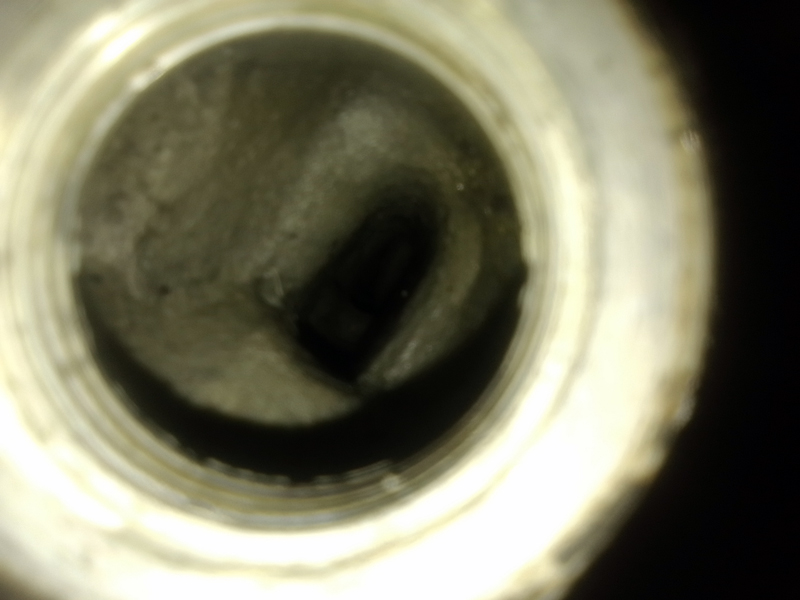 2. Side core plugs 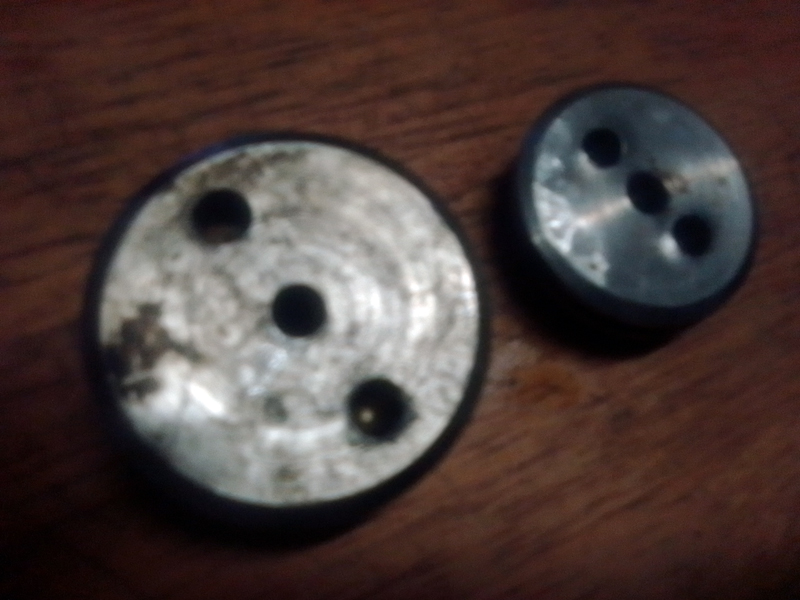 3.Side view front core plug 1 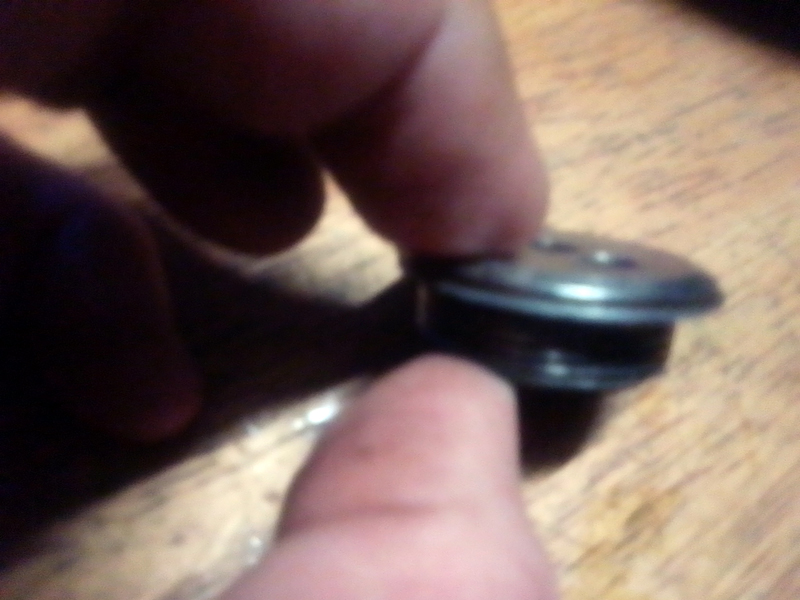 4. Side view front core plug 2 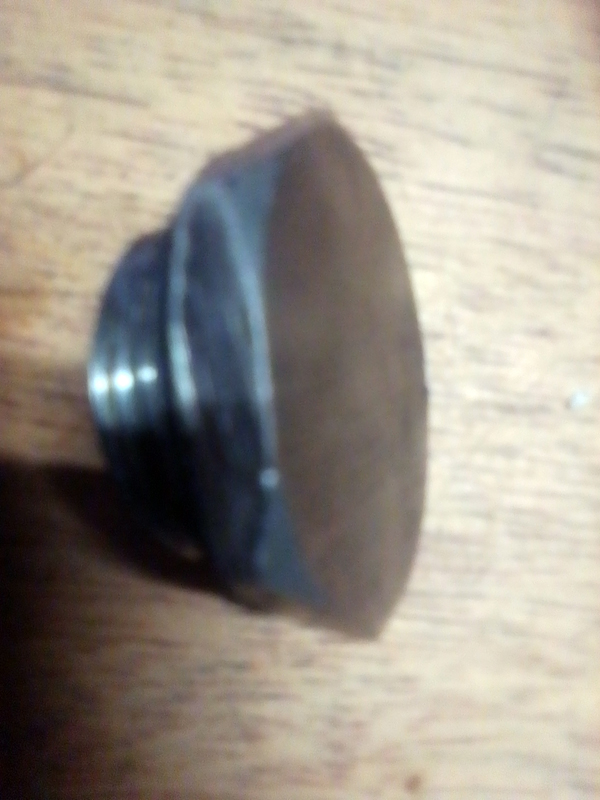 5. Solder in coolant gallery 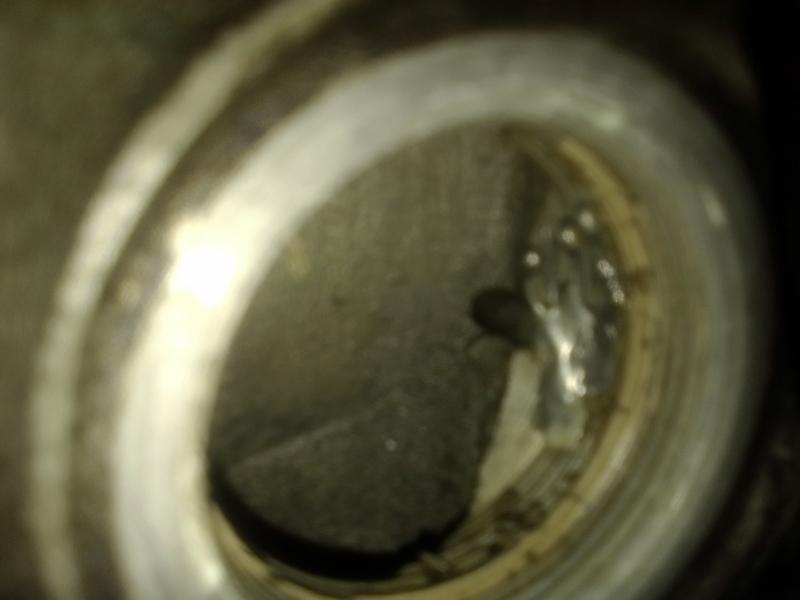 6. Solder removed for measuring 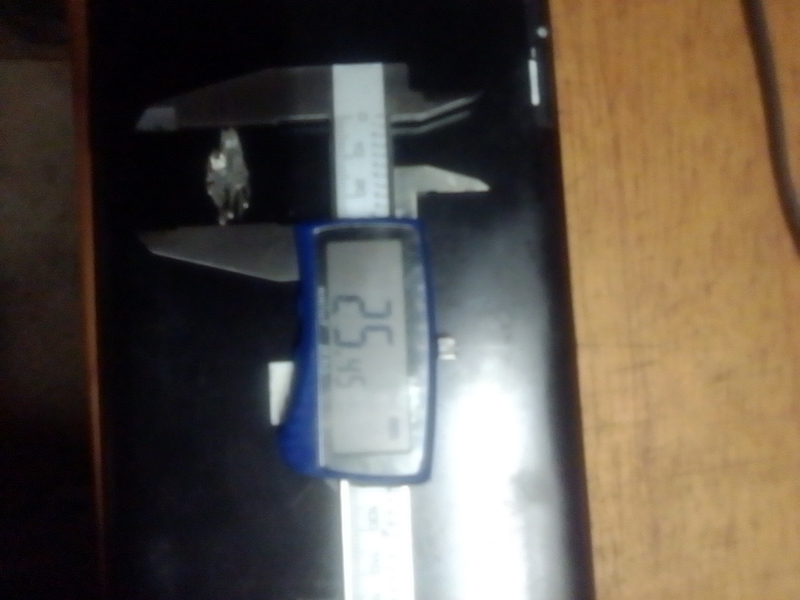 7. Special core plug tools. side view 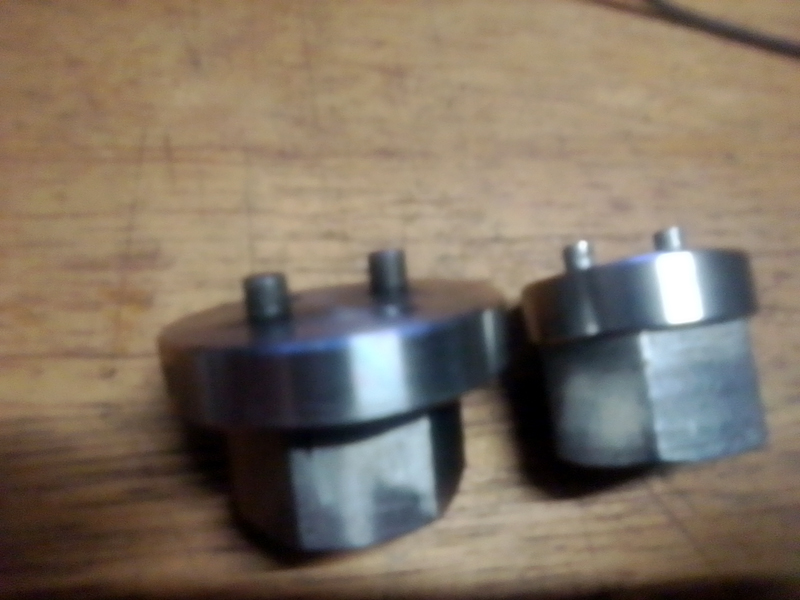 8. Special core plug tools 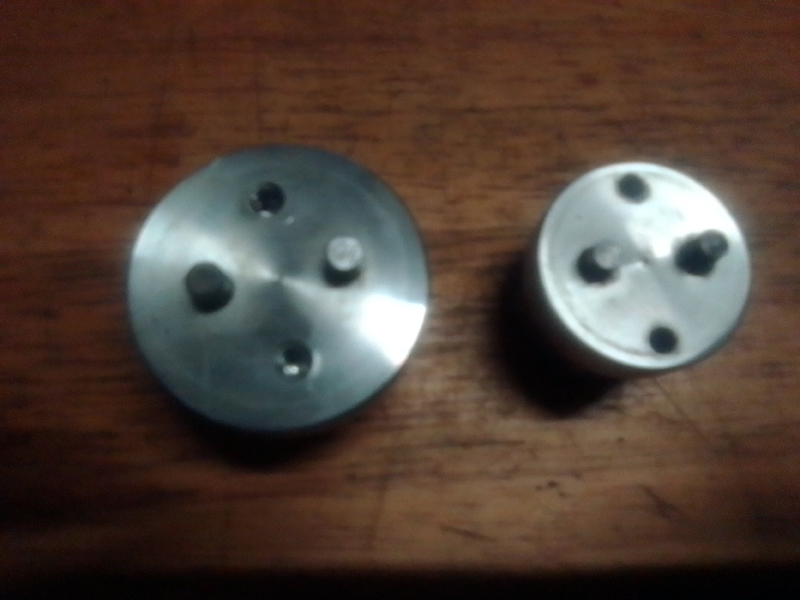  | ||
Geoff Wootton Grand Master Username: dounraey Post Number: 2183 Registered: 05-2012 |
Hi Vladimir I do wonder why the RR engineers used screw threads on their core plugs. They are normally a push (interference) fit to allow them to be pushed out in the event of the cylinder block freezing, hence their other name of freeze plugs. Great article though on a topic we rarely encounter - I look forward to the pics. | ||
Vladimir Ivanovich Kirillov Prolific User Username: soviet Post Number: 1674 Registered: 02-2013 |
Larry if you remove both of the large core plugs on each side of the engine and look into the hole you can actually see the outside wall of the cylinder liner but only through an tiny hole approximately 1/8 inch in diameter that goes from to coolant gallery to the liner. I imagine that removal of those core plugs with the engine still in the car would be a nasty task and even with the core plugs out you would need a bore scope with a light on the end of the flexible part. (Message approved by david_gore) | ||
Vladimir Ivanovich Kirillov Prolific User Username: soviet Post Number: 1675 Registered: 02-2013 |
Geoff, just a guess, but I think RR/B used screw in stainless screws core plugs so they would never have to be replaced. Clearly the interference push in core plugs were cheaper to manufacture and fit and but I am not certain they were engineered to protect the block from cracking if the coolant froze. One US car did use screw in core plugs: 1966 Shelby Cobra with 427 sideoiler V8 which went 0 to 80 mph in 6.2 seconds and a top speed of 165 mph. My guess is Ford used screw in core plugs to stop them coming out too. All core plugs are there for the necessity of removing the casing sand when the block is cast. (Message approved by david_gore) | ||
Geoff Wootton Grand Master Username: dounraey Post Number: 2184 Registered: 05-2012 |
Vlad - freeze plugs - probably just folklore then. It's much more sensible to screw them in. I always thought it risky to rely on an interference fit, even though the pressure behind is not high. It says in the manual to drain the residual crankcase coolant by removing the two drain plugs when changing the engine coolant. I have never done this for fear of them leaking afterwards. I figure that regular coolant changes will dilute down the small amount of coolant left in the crankcase. I wonder how many owners do remove the drain plugs. | ||
Mark Aldridge Frequent User Username: mark_aldridge Post Number: 660 Registered: 10-2008 |
Geoff, I have never removed the drain plugs on any of the SY or SZ cars I have had. I remove the bottom hose and flush the radiator and heater and then fill the block via the water pump outlet for the bottom hose and let it empty several times. I made an adapter for the garden hose to fit the water pump. reconnect the hoses put in the quantity of antifreeze neat per the handbook to give a 50% mixture and the fill up with water. It mixes when the engine runs. I often put a can of Barrs leaks in as a precaution. Mark | ||
ross kowalski Prolific User Username: cdfpw Post Number: 1313 Registered: 11-2015 |
Geoff, One reason the RR only had the two holes on the side of the block is that because of the liners the inner sand core of the mould was pretty much stable. With cast cylinder walls you need the core around the cylinder core to be pretty stable during the pour, hence the multiple core plugs on that style construction. | ||
Geoff Wootton Grand Master Username: dounraey Post Number: 2185 Registered: 05-2012 |
Mark and Ross Thanks for the additional information and confirmation on not having to remove the drain plugs. I had wondered if I was committing some cardinal sin in not doing so - obviously not. | ||
Larry Kavanagh Frequent User Username: shadow_11 Post Number: 569 Registered: 05-2016 |
Thanks for the info regarding the limited visual access to the cylinder liners with core plugs removed Vlad. On the topic of interference fit core/freeze plugs I had one pop out on a Hillman Hunter during a cold winter many years ago, there was obviously no antifreeze in the engine, just plain water, the core plug was hanging out more than a couple of inches and a cylindrical shaped lump of ice that expanded from the engine coolant passage was still stuck to the back of the core plug and holding it in suspension. The engine wasn't damaged and once it thawed out I was able to push in a new core plug using a timber dowel made from a piece of a brush handle gently tapped with a hammer. I reckon that had the core plug not popped out the block would probably have cracked instead. I hope you have found the cause of your engine overheating, from what I've read on the subject corrosion around the cylinder liners usually starts lower down and directly above the lower coolant seal but I have no practical experience in this area. When draining my coolant I always remove the drain plugs having first emptied the system as much as possible via the lower rad hose and there's always more coolant that comes from the block when I do so, I reckon that the lowest level of the coolant passages is below the bottom rad hose. I then place a garden hose in one of the drain plug holes and flush out through the opposite drain plug hole and then do similar in reverse. I haven't yet had a leak from a reinstalled drain plug but that's just my personal experience. | ||
Trevor Hodgekinson Experienced User Username: wm20 Post Number: 148 Registered: 11-2006 |
One of the downsides or runing the cars commercially is you never know what the previous operators had don to them. Why people butcher them is beyond me as Shadows are not all that hard to work on. Two of our cars needed new liners. so if you are going that deep into the engine may as well replace all of the seals while you are there & you have rented the sleeve pullers right? Wrong, first car broke the puller so out came the engine to get it machined out for a of warping the block. At least 1" of chemiweld. resiweld, Barrs leaks and one layer looked distinctly like concrete. Expensive little job that turned out to be. |